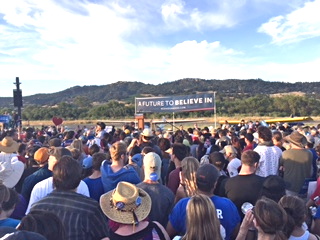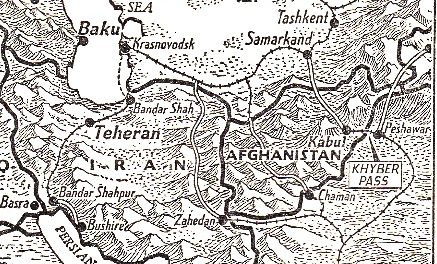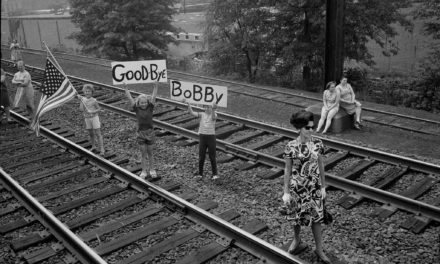By Thomas Fuller in the New York Times October 26:
It’s been 10 months since recreational marijuana became legal in California, and my email inbox here in San Francisco fills up every week with companies offering new products.
There’s cannabis roll-on pain reliever, sparkling water infused with marijuana, cannabis for pets. I get invited to cannabis lounges and a marijuana history tour of San Francisco. Cannabis is infused — that seems to be industry’s word of choice — into a huge variety of foods and candies. Chefs are concocting gourmet dinners that pair marijuana with another drug, the liquid one that California is famous for.
How about some marijuana-leaf pesto with a glass of Napa chardonnay?
Yet despite all of the innovation and energy in the legalized market, the black market is still dominant. Only around 3 percent of marijuana farmers in the state have obtained licenses, said Hezekiah Allen, the executive director of the California Growers Association, a marijuana advocacy group.
It’s hard to persuade pot farmers who have been producing in the shadows for decades to fill out voluminous paperwork, pay taxes and comply with reams of environmental regulations, Mr. Allen said. And he believes there are parallels between Canada and California, especially in British Columbia, where growers have operated in the wilds for decades just as they have in Humboldt County in California.
It’s become clear to regulators and the cannabis business over all that legalization is not something that happens in a single day, or year.
Yes, the marijuana business has exploded into its own economy in California. There are conferences, magazines, cannabis testing companies, marijuana market research organizations, law firms specializing in cannabis law, apps to compare cannabis brands and find weed shops.
All of this is pumped out to the wider world by cannabis public relations companies.
But legal sales of marijuana are far below what proponents of legalization had hoped for.
Licensed sales of marijuana are likely to reach $3.4 billion this year, according to Tom Adams of BDS Analytics, a company that tracks retail cannabis sales. But that’s not much more than the $3 billion of sales last year, when only medical marijuana was available.
The problem is that regulated marijuana, which is subject to testing, taxes and many other regulations — as it will be in Canada — costs significantly more than pot grown and sold on the black market.
Mr. Adams calculated that if a black market gram of marijuana flower sells for $6.25, it would cost $11.08 per gram — 77 percent more — in the licensed market.
“As long as there is onerous regulation and taxation imposed on the legal market, you can forget about getting rid of the illicit market,” Mr. Adams said.
[Yes, Canadians will be able to grow their own (though not in every province). No, it won’t be legal for kids to smoke. Here’s what you need to know as Canada legalizes marijuana.]
Even consumers who don’t mind paying extra for legal marijuana often have to go out of their way to get it, because many City Councils and county boards of supervisors have decided against licensing marijuana businesses.
Only 19 percent of California cities have a marijuana retail shop, according to Weedmaps, a company that tracks cannabis businesses in the state.
The fact is: Liberal Californians voted convincingly to legalize cannabis in 2016, but they didn’t necessarily want a marijuana shop down the block.
This reality is far from the vision that many Californians had of legalization when the ballot measure passed in 2016. One of the leading arguments in favor of legalization was the suggestion that it would wipe out the black market for pot.
A state where politicians have long cited the futility of the war on drugs now must decide what to do about scofflaws in a legalized system. California, by far the country’s largest producer of cannabis, still supplies the rest of America with millions of pounds of black-market marijuana.
The state must also reckon with lower tax revenues than anticipated.
The ballot measure legalizing marijuana promised annual tax windfalls of a billion dollars. Yet in the first two quarters of this year, the state reported just $135 million in cannabis tax revenues, not including municipal taxes.
It’s of course still early days. Many industry players predict that the black-market marijuana will continue in the same way the moonshine business lingered in dry parts of the South after Prohibition ended.
But Daniel Okrent, the author of “Last Call,” a history of Prohibition, said most of the black market for alcohol disappeared quickly after Prohibition. “Nearly immediately in most of the country the illegals became legal,” he said.
For now, the California marijuana business feels like Eastern Europe after the fall of the Berlin Wall. It’s a mad rush to establish brands and capture market share.
Hollywood stars, musicians and politicians are joining the green rush. Here’s one example: After losing a primary bid in the race for California governor, Antonio Villaraigosa, the former Los Angeles mayor, joined the board of a large cannabis company.
On a cultural level, the legal pot industry is reaching for some respectability through language. Public relations people urge reporters to refrain from using the words marijuana or pot. They prefer cannabis.
Pot that is grown outdoors is “sun grown.” A joint sold in a retail store is a “pre-roll.” Niche brands market their buds as “heirloom flowers.”
Legalization is still a work in progress in California, but there’s no denying the capitalist zeal of the nascent, legalized industry. Decades ago, pot was something you needed to keep hidden from the authorities in the state. In today’s California it’s advertised on billboards and on the sides of buses.





